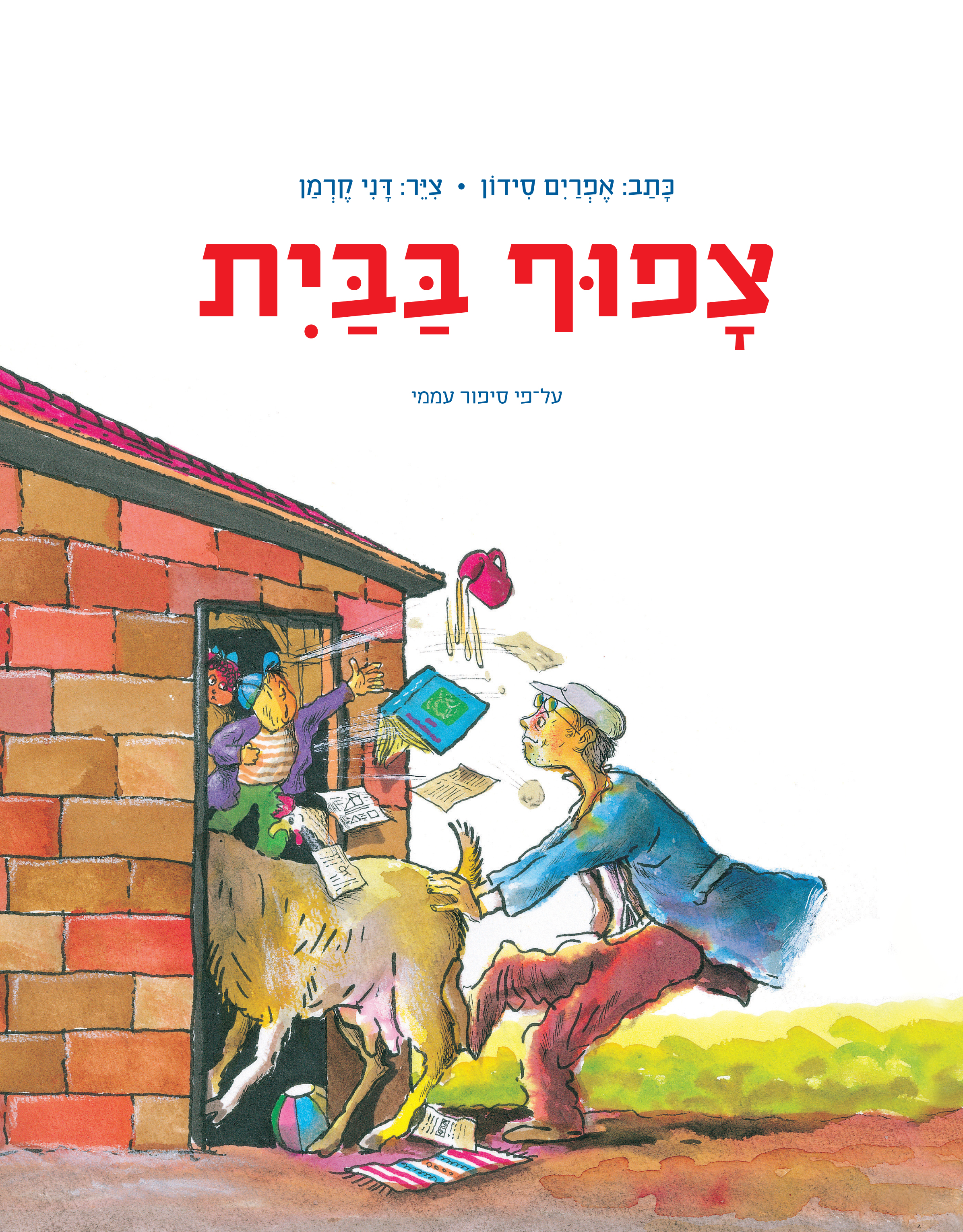צפוף בבית
מאת: אפרים סידון | איורים: דני קרמן
תרגום לאנגלית של ההצעות להורים המודפסות בדפים האחרונים של הספר
It's Crowded at Home
By: Ephraim Sidon
Illustrations: Danny Kerman
Dear Parents,
What can one do when a tiny house gets too crowded? Bring in some chickens, a cow and a goat, of course! And when they are all removed, the house is suddenly oh so spacious. This rhyming story teaches children the source of the Hebrew phrase "to remove the goat," encourages one to be "happy with one's lot" (Avot 4:1) and acquaints them with a well-known example of traditional Jewish folklore.
"Who is rich? He who is happy with his lot" (Pirkei Avot 4,1)
In the Mishna, in the Ethics of the Fathers (chapter 4), it is written: “Who is rich? He who is happy with his lot.” This proverb teaches that happiness is measured by our ability to appreciate and enjoy what we have. Too often we value things when we no longer have them. The Rabbi's curious advice to add chickens, a cow and a goat to the tiny house helps the family learn an important lesson in appreciation and thankfulness.
"Removing the goat"
Goats abound in Jewish folklore! The story of the crowded house is the source of the well-known phrase "removing the goat", which means generating a sense of space by getting rid of something that is superfluous or unnecessary.
Suggested Family Activities
- When reading the story, you should make sure your children understand that the house did not really get larger; rather, the family's perspective on it changed. To help demonstrate this you can ask your children to compare the illustrations of the house at the start of the book and at the end, once the goat was removed. What is the same and what is different in these two pictures?
- Danny Kerman's humorous illustrations are rich in details that depict the chaotic and crowded household. You can flip through the book together and look for things on each page that are not in their place or that make you laugh.
- Shimon's house is not only crowded; it is noisy as well. You can demonstrate this with your children. Turn on the radio or TV, and one by one add noises from the story: Each one in turn can make the sounds of the cow, the chickens, the goat,… until you can't hear the radio or TV. Silence the animal sounds at once and feel how the room suddenly becomes quiet.
- At times we feel crowded in our homes because things no longer in use fill the shelves, cupboards and closets. You can straighten up with your children, removing toys, dolls or clothes that are no longer in use and donating them to those in need. After removing a few "goats", see if your house too feels more spacious.
- You can build a model of Shimon's house using recycled materials and figurines. Take a shoe box, cut out windows and decorate it, and fill it with building blocks, pieces of LEGO, and other toy figurines. When the box is almost full, add the animals. Is there room for more objects?
- You can act out the story with your children. Select appropriate costumes (an old hat for Shimon, a kerchief for his wife, a large kippah for the Rabbi…) and stuffed animals or toys to represent the animals. In order to add to the sense of crowdedness, you can crouch together in a corner behind the furniture. Don't forget to make animal sounds and movements!
Humor and Folklore
"It's Crowded at Home" is a folktale that takes place in a Jewish village from the past. The moral of the story is relayed through humor, without need for any preaching. The humorous tale of the goat, like other traditional Jewish stories, reminds us that many important lessons in life can be learned with a smile!





